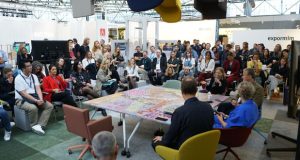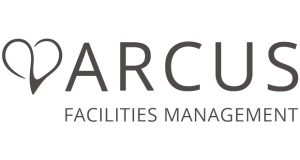Landsec’s new HQ office takes a multi-pronged approach to promoting staff wellbeing, from facilitating active working to providing healthy food that people want to eat
When property company Landsec relocated its head office to one of its best-known developments, Cardinal Place at London’s Victoria, the move was seen as an opportunity to improve the health and wellbeing of its staff, from the quality of the food on offer to the way in which people work.
The resulting HQ, at 80-100 Victoria Street, is the largest UK space to have been certified silver by the International WELL Building Institute (IWBI). The site has also been deemed BREEAM Outstanding for its sustainability, and Landsec, along with catering partner Bennett Hay, was a BIFM Award finalist in 2017 for impact on employee experience.
Explains Anthony Bennett, Owner Director at Bennett Hay: “We have worked with Landsec since 2011 and were operating the café/bar in 80 Victoria Street, during which time Landsec’s head office was at the Strand. So when they were thinking of relocating, they spoke to us.”
 The old office was spread across eight floors and split into lots of small units, which made it difficult for employees to meet each other without pre-planning. Many were unhappy with its poor lighting and inconsistent temperatures, all of which resulted in only half the employees believing the office enabled them to work productively.
The old office was spread across eight floors and split into lots of small units, which made it difficult for employees to meet each other without pre-planning. Many were unhappy with its poor lighting and inconsistent temperatures, all of which resulted in only half the employees believing the office enabled them to work productively.
Says Jan Portch, HQ Office Manager, Landsec: “Once we decided to move we knew we needed to up our game in terms of our customer-facing facilities, and that we had a lot of work to do to improve provision of healthy food for our staff. We also had a requirement that the food and the layout would be drivers for active working.”
Previously, all the staff had a daily lunch allowance, but what was on offer only appealed to around 60 per cent of people, as there was only space for limited quantities of sandwiches and salads. It was decided to spend the same amount of money in offering food that would suit all tastes and requirements, including religious beliefs, dietary needs such as gluten free or vegan, and any allergies. This was all fed into the brief for Bennett Hay to make the food provision interesting, easy to churn and appealing.
Says Portch: “We met about 15 months ahead of time, and Bennett Hay became instrumental in lots of other aspects of the move as well as providing the food. There was an awful lot of work to do within 15 months, but we got it done.”
The change management process played an important part in the process, with change champions appointed from every part of the organisation – key influencers who had a feel for what their colleagues would want. A mock-up space was created for users to check out new furniture pieces, from breakout chairs to the lockers that would replace under-desk pedestals. Says Bennett: “What struck us was the way in which Jan and her team engaged everyone throughout the process, giving people the opportunity to be involved in the decisions; from the sort of furniture they preferred to trialling the coffee machines and the coffee we put in them.”
NEW RULES
One of the key rules for the staff-facing areas of the new offices was to facilitate active working, which began with locating all 400 staff on one floor, with almost no partitions or isolated spaces. Different departments of course have differing needs, so each was allocated an area, coached on the active working concept, and given a choice of the type of furniture they might put there.
In the final tally, around 30 per cent of staff have allocated desks and the rest are free to sit anywhere they like within their allocated neighbourhoods or in the plethora of touchdown areas scattered throughout the workplace. A clear desk policy has been implemented, so everyone has access to a locker with the locker areas according to Portch being “a hive of activity in the morning, with people interacting with people they might not otherwise meet up with.”
 Because most occupants now work in open-plan areas, background distractions have been reduced by introducing white-noise machines at strategic points. These help to increase privacy levels without the need for physical walls. Quiet rooms, soundproof booths and even a library also offer occupants quiet and individual space to work. More collaboration is encouraged by providing plenty of places for teams to get together – including meeting pods, comfortable sofa areas and informal presentation spaces.
Because most occupants now work in open-plan areas, background distractions have been reduced by introducing white-noise machines at strategic points. These help to increase privacy levels without the need for physical walls. Quiet rooms, soundproof booths and even a library also offer occupants quiet and individual space to work. More collaboration is encouraged by providing plenty of places for teams to get together – including meeting pods, comfortable sofa areas and informal presentation spaces.
But to really encourage active working it’s important to get people moving, which is where the food provision comes in. There’s a range of tea-points and kitchens available, all of which are user friendly and need the minimum of support. “We also had a requirement that the food and the toilets would be drivers for active working and the ‘moments’ that people had on the floor,” says Portch. “Accidental collaboration is deemed a bit of a cliché, but in practice this is proving to be an amazing thing.
“To help achieve it, we intersperse where people can print, where we put the food, the drinks and the toilets, and that’s what drives the traffic and makes people interact with one another. We rotate the snacks throughout different locations, which gets them moving because they have to go looking for them.” As a result, electronic communication has decreased, with internal emails down by 18 per cent – partly because people are more able to speak face-to-face.




